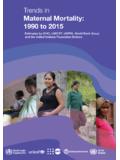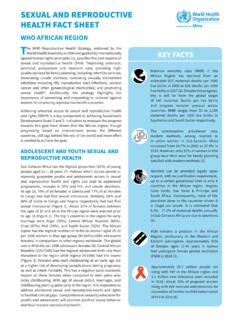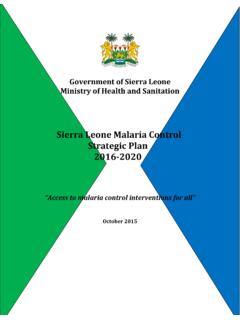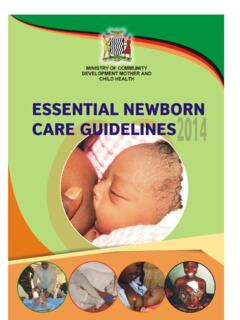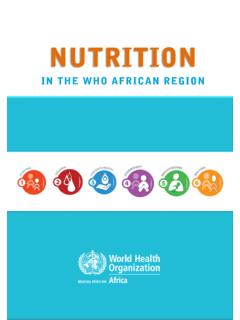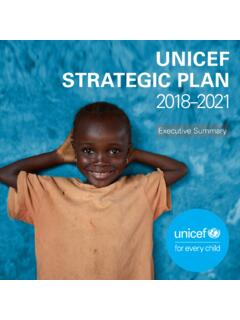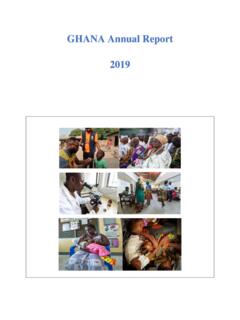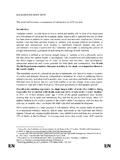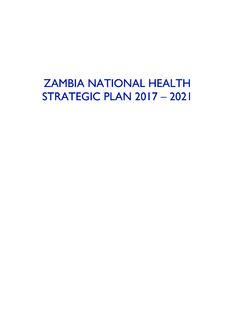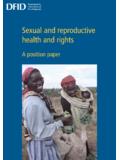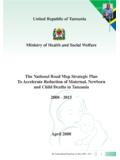Transcription of STATE OF HEALTH FINANCING IN THE AFRICAN REGION
1 STATE OF HEALTH FINANCING IN THE AFRICAN REGIONJ anuary 2013 STATE OF HEALTH FINANCING IN THE AFRICAN REGION3 World HEALTH Organization Regional Office for AfricaCommunity Based HEALTH InsuranceCommunity Based Reproductive HEALTH AgentsCommunaut conomique des tats de l Afrique CentraleCommunaut Financi re AfricaineCountry HEALTH Systems Surveillance and IntelligenceDistrict-wide Mutual HEALTH Insurance SchemesDemocratic Republic of CongoGross Domestic ProductGeneral government expenditure General government HEALTH expenditure Gross National IncomeHealth Extension ProgramHealth Extension WorkersHarmonization for HEALTH in AfricaHigh-Level Taskforce on Innovative International FINANCING for HEALTH SystemsInternational HEALTH Partnership International Monetary Fund Millennium Development Goals maternal Mortality RatioNational HEALTH Insurance Scheme National HEALTH Strategic Plan Noncommunicable DiseaseOfficial Development Assistance Providing for HEALTH initiative Performance Based FINANCING Primary HEALTH CareResult Based FINANCING Total HEALTH Expenditure Under 5 Mortality RateUnited Nations Population FundUnited Nations Children s FundValue Added TaxWorld HEALTH
2 AssemblyWorld HEALTH OrganizationCBHICBRHAsCEMACC FACHEssDMHIsDRCGDPGGE GGHE GNIHEPHEWsHHAHLTFIHP+IMFMDGMMRNHIsNHsPNC DODAP4 HPBFPHCRBFTHEU5 MRUNFPAUNICEFVATWHAWHOA bbreviations WHO Regional Office for Africa, 2013 Publications of the World HEALTH Organization enjoy copyright protection in accordance with the provisions of Protocol 2 of the Universal Copyright Convention. All rights reserved. Copies of this publication may be obtained from the Library, WHO Regional Office for Africa, Box 6, Brazzaville, Republic of Congo (Tel: +47 241 39100; +242 06 5081114; Fax: +47 241 39501; E-mail: Requests for permission to reproduce or translate this publication whether for sale or for non-commercial distribution should be sent to the same designations employed and the presentation of the material in this publication do not imply the expression of any opinion whatsoever on the part of the World HEALTH Organization concerning the legal status of any country, territory, city or area or of its authorities, or concerning the delimitation of its frontiers or boundaries.)
3 Dotted lines on maps represent approximate border lines for which there may not yet be full mention of specific companies or of certain manufacturers products does not imply that they are endorsed or recommended by the World HEALTH Organization in preference to others of a similar nature that are not mentioned. Errors and omissions excepted, the names of proprietary products are distinguished by initial capital reasonable precautions have been taken by the World HEALTH Organization to verify the information contained in this publication. However, the published material is being distributed without warranty of any kind, either express or implied.
4 The responsibility for the interpretation and use of the material lies with the reader. In no event shall the World HEALTH Organization or its Regional Office for Africa be liable for damages arising from its in the Republic of CongoWHO/AFRO Library Cataloguing in Publication DataState of HEALTH FINANCING in the AFRICAN Region1. Healthcare Financing2. HEALTH services accessibility economics3. HEALTH Expenditures4. Evaluation studies5. AfricaI. World HEALTH Organization. Regional Office for AfricaISBN: 978-929023213-1 (NLM Classification: W 74 HA1) ACkNOWLEDGMENTSThis document was produced under the coordination of Bokar Toure, Director of HEALTH Systems Strengthening WHO AFRICAN Regional Office.
5 The principal writers of the report were Laurent Musango, Juliet Nabyonga, Riku Elovainio and Stephen report is based on responses of country teams consisting of individuals from the government and partners from the Harmonizing for HEALTH in Africa action framework to a questionnaire on HEALTH FINANCING developed by the WHO AFRICAN Regional Office. This document owes a lot to the work of these were also made by Luis G. Sambo, WHO AFRICAN Office Regional Director, Joseskirigia, Joseph kutzin, Inke Mathauer and Claude HEALTH Organization Regional Office for AfricaSTATE OF HEALTH FINANCING IN THE AFRICAN REGION5 STATE OF HEALTH FINANCING IN THE AFRICAN REGION4 World HEALTH Organization Regional Office for AfricaThe Member States of the AFRICAN REGION of the World HEALTH Organization are on average still far from meeting key HEALTH FINANCING goals such as the Abuja Declaration target of allocating 15% of the government budget to HEALTH .
6 Out-of-pocket expenditure is still higher than 40% of the total HEALTH expenditure in 20 of the 45 countries studied, and in 22 countries the total HEALTH expenditure does not reach even the minimal level of US$ 44 per capita defined by the High Level Task Force on Innovative International FINANCING for HEALTH Systems (HLTF). Only three countries have attained the Abuja Declaration and HLTF countries have limited capacity of raising public revenue mainly because the informal nature of their economies makes collection of tax and contributions difficult. This limits their opportunities for investing in HEALTH .
7 Innovative resource mobilization instruments and prioritization of government spending on HEALTH may bridge the funding gap to some extent. External funds will still remain critical in many contexts but more should be done to ensure their effective use through improved predictability of funding flows and harmonization of their allocation with national priorities and AFRICAN countries have recently implemented successful HEALTH FINANCING reforms that have increased access to HEALTH services and financial risk protection, moving them closer to the policy objective of universal HEALTH coverage (UHC).
8 Many countries have put in place mechanisms to protect the poor and vulnerable population groups, including measures that have abolished or reduced user fees at the point of access to HEALTH services. Evidence has shown that for these measures to effectively increase the use of good quality HEALTH services, systemwide investments are variations can be observed in HEALTH outcomes in relation to some of the key aggregate HEALTH FINANCING indicators. This calls for more in-depth and context-specific analysis of the design and operation of the existing HEALTH FINANCING systems and solutions to improve some of the key indicators such as equity in resource allocation and efficiency in resource into account the challenges of raising sufficient financial resources for HEALTH , distributing the financial burden of HEALTH expenditure in an equitable manner and addressing the need for efficient use of the scarce resources.
9 Close collaboration between the ministries of finance and HEALTH is interaction between the ministries of finance and HEALTH on policy can be enhanced by such actions as formation of interministerial committees and other policy-oriented bodies and institutions for dialogue and information sharing. The ministry of finance will need to support capacity building in financial management in the HEALTH sector and the ministry of HEALTH will need to engage the ministry of finance in sectoral planning, budgeting and implementation dialogue between the ministries of finance and HEALTH will need to be embedded within the process of developing a HEALTH FINANCING strategy that is based on evidence and takes into account the constraints and opportunities in every specific context.
10 Considering that the building blocks of the HEALTH system are interdependent and interlinked, development and implementation of HEALTH FINANCING strategies must run parallel with efforts to strengthen all the other HEALTH system dimensions in order for a country to move towards universal HEALTH messages of this reportIntroductionMethodology Sources of dataAnalysisResults and discussionMacroeconomics, government income and external fundsAvailable funds for healthTotal HEALTH expenditureDomestic funds for HEALTH External funds for healthExtent of government prioritization of healthGeneral government expenditure on HEALTH Financial risks and barriers to access to HEALTH services Other HEALTH system components to support universal HEALTH coverageHealth outcomes and HEALTH financingMaternal mortality ratio (MMR)Under-5 mortality rateConclusionReferencesAnnex I: Country categorization by GNI per capita in Us$ at current pricesAnnex II.
